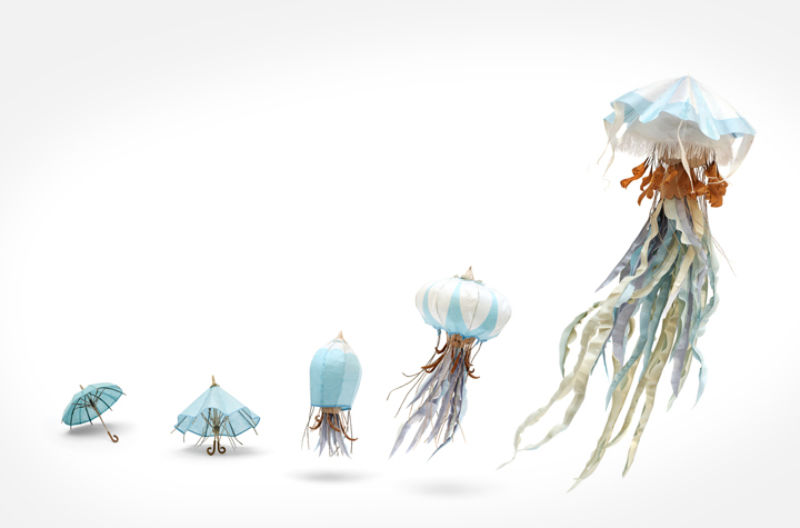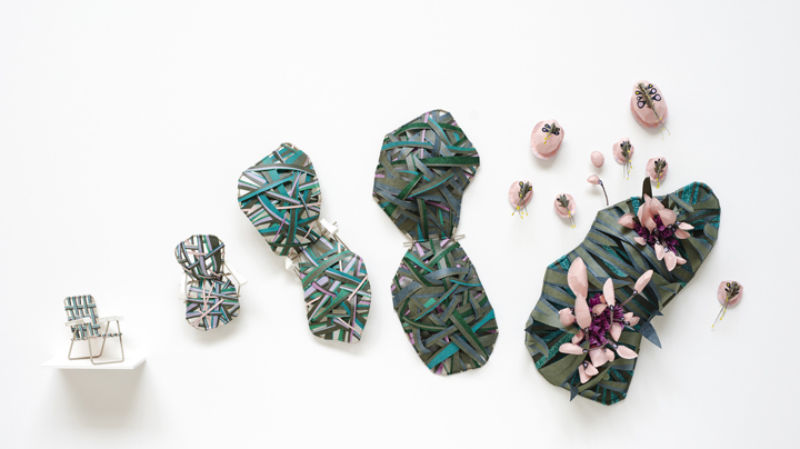Blog / 2016 / On Loving Amateur Artists and Staying One Yourself
July 1, 2016
Everyone these days seems to be calling themselves an artist. From the smart phone user who snaps a few pics and throws a fancy filter on the photos to the doodler who dashes off a drawing every three months, this easy appropriation of the term “artist” can make some professionals uncomfortable. At first glance, it seems to dilute the meaning of the word and take away from the hard work that’s required to turn a creative tendency into a career. On closer examination though, it becomes clear just how badly professional artists need amateurs.
For years, I was one of those uncomfortable professionals. What finally changed my mind about the weekend warriors taking our title was a sudden moment of recognition: I too had been the eager amateur. I’m not talking about the time I spent developing my painting and visual art skills, although, in that sense, I would qualify as well. Rather, I realized I’d been an amateur in the theater world. I went so far as to attend a renowned école de mime in Paris, and, once I was out of school, I was cast in several community theater pieces, one of which even paid an honorarium.
In the decade or so that I pursued performing as an art, there were moments—bright shining instances that remain etched on my soul—where I truly believed I was an actor. But, though I’m over this dream, my short acting career was not a waste of time. It plays an important role in my ability to be a visual artist, because it helped me to develop valuable business skills. Doing theater taught me a lot about improvising with other people, which is just another way of thinking about the conversation and connection. It also forced me to recognize my stage fright as an unfounded fear. Though I’m still nervous getting up in front of strangers to do an artist talk, years of being on stage have made the spotlight a little homier to me.
Education is always a good idea, even if it doesn’t seem to lead directly to the sort of employment that follows naturally from the area of study. Plenty of professional artists didn’t go to school for art, but their studies still impact their work.
Sometimes the link is more obvious, like with the biology major who does science illustration or the car mechanic who becomes a metal sculptor. Other times, it’s not. There are the comic book creators who studied political science and the landscape artists who went to school for nursing. In the case of the former, their education might bring a depth to the social critique in their work. With the latter, their studies might make them want to create art to soothe the sick. Either way, the experience shapes the art. What’s more, I’m not the only one who studied several arts before ultimately choosing one to pursue professionally. The groundbreaking performance artist Laurie Anderson famously has an MFA in sculpture.
In the end, we are, each of us, amateurs to somebody in some activity. For example, most of us don’t cook at the level of a professional chef when we make our family dinner. And many of us are using social media to invite ourselves into the branding sandbox that was once the territory of public relations firms. Our amateur status doesn’t make our efforts any less useful in our everyday. In fact, it may help keep us grounded in situations where professionals become entangled in specialized technical aspects.
So amateurs create in a state of semi-ignorant bliss that’s very nice for them, but their uninhibited output benefits the rest of us as well. Laypeople contribute to the careers of professionals in a variety of ways. In art, the amateurs help professionals in the following ways:
- Amateurs see to it that art education remains a part of the curriculum.
- Amateurs use art-making tools and then these tools become more accessible.
- The amateurs’ love for their art is contagious.
- Amateurs appreciate the tenacity it takes to market oneself successfully as an artist.
It isn’t always easy to find funding to ensure that children are taught basic art-making skills. If it were only professional artists fighting for today’s kids, the programs would be cut back even more, and the next generation of artists and amateurs would suffer.
Currently, the crowd of amateurs who are clamoring for less expensive cameras and video editing software have given artists a new range of tools, but this scenario has played out repeatedly in our history. The interest of laypeople helps simplify art tools while also making them safer and more affordable.
People canvt help but talk about the art they’ve done, and their passion sparks similar feelings in others as well. Furthermore, amateurs know how difficult a certain technique is because they’ve tried it themselves. Their respect for the artists they admire is deepened by their own experiences, making them the best kind of art advocate.
When amateurs have tried to be professional artists, they truly understand us. This field requires courage, passion, and persistence in spades. While the amateur might have decided that it wasn’t going to work out for them professionally, that doesn’t mean they don’t want to see others thrive. They support the efforts of professionals by buying their work, or they nurture art in other ways, like by promoting their favorite artists or art in general. Truthfully, the how of it doesn’t matter. The important thing is that amateurs are some of the closest allies artists can have.
If I had to sum up these four things that amateurs do for professionals in a single sentence, I’d say this:
Amateurs create a context in which professionals can flourish.
Without this supportive environment—without this engaged audience—professionals have nothing. So instead of cringing every time another wannabe artist claims the title, maybe professionals would do better to give them a big hug.
It’s vital that each of us remember where we come from, that we honor the amateur in ourselves. Here, I’m referring to the term in its original sense, the one without the baggage of judgment and the worry of just how much money a professional must make to be a part of the club. I’m talking about the term that comes from the Italian via French. I’m talking about the “amateur” as the lover.

One professional who is very much in touch with this part of her practice is the award-winning artist and author Cybèle Young. She studied sculpture and printmaking at the Ontario College of Art and Design, and her résumé is at least as impressive as her work. Still, it’s her exquisite sense of craft that appeals to me, especially in that it showcases her colorful imagination so beautifully.
When I first encountered Young’s art, her miniature sculptures made from Japanese paper caught my eye. These tiny worlds are sometimes representational and at other times more abstract, but always surreal. Their size lends them a near-mystical quality that’s completely engrossing.

Still, as I looked further into Young’s work, I noticed that the artist had a lot more going on than these pretty paper pieces. For one thing, she has written and illustrated eight picture books to date. Some of these feature images of her sculptures, juxtaposed in new and interesting ways, and Young’s film work takes that inspiration to another level. Using stop-motion, she animates her paper creations, often building mysterious narratives that are deliciously inviting for the audience. Her videos have a raw quality that’s not entirely like the rest of the her work. That difference made me want to ask Young a bit about what goes on in her studio in her head.
GS: What drew you to sculpture and printmaking in the first place? Why did you end up studying them?
CY: Sculpture initially enticed me with problem-solving challenges: What things are made of? And, how are they put together? When the sculpture became too big and cumbersome and I craved the drawn line, I turned to printmaking which is like drawing sculpturally. When I realized the prints could be worked with in three-dimensions and with limited means, I found all of my creative needs satisfied.
GS: What drew you to books as a form of expression?
CY: I am captivated by the ability to experience something big in something small. I strive for this in my work and I think this is reflected in my love for books and what they can provide for any walk of life. Books can also foster intimacy between people who might find it difficult otherwise. I never knew my son was capable of sitting happy and calm on someone’s lap until we started reading to him.
GS: What drew you to film?
CY: I used to create kinetic sculpture so I often articulate my small sculptures to understand them on a deeper level. I give them life in film so they have the chance to tell me more of their story and allow me to see them in new and unexpected ways.
GS: How do these different modes of expression play off of each other in your process and in your finished work?
CY: Sometimes I find I’m shifting gears more than I can handle but generally the different mediums form a synergistic relationship. In the end it’s about what works best to express the ideas at the time.
GS: Which one has been most helpful in establishing your career? How or why?
CY: Truly I can’t make a distinction. For example the film work hasn’t generally been directly profitable but it has had great influence in the development of my ideas.
This last revelation rings true in my own work as well. I’ve been making videos about my art and posting them to my blog for years and, until recently, I hadn’t managed to monetize them at all. That said, it would be hard to overstate their worth in terms of my practice, both in generating concepts and in getting better at communicating them. Twice now, I’ve culled my videos along with the text I publish on my blog in order to find material for books I was writing.
All professionals can strive to remain amateurs even as they continue to cultivate their chosen discipline. We never need to stop looking for new tools and mediums. The sense of possibility that comes with inexperience is at least as valid as the one that comes from knowing an art form inside and out. When we’re too hung up on what makes “real” art, we forget what’s most interesting about being an artist. We forget to play. Art-making is a fundamentally social act and one that can and should be for everyone. Embrace the amateur in others; embrace the amateur in you.
PLEASE NOTE
This article was originally published in Professional Artist magazine, which I don’t write for anymore.
Maybe this post made you think of something you want to share with me? Or perhaps you have a question about my art? I’d love to hear from you!
To receive an email every time I publish a new article or video, sign up for my special mailing list.
If you enjoyed this post, Ko-fi allows you to donate. Every dollar you give is worth a bajillion to me!



